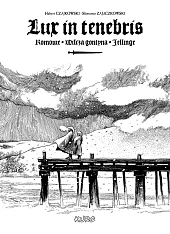Monte Cassino 1944. The Battle of 10 Armies
Monte Cassino 1944. The Battle of 10 Armies
Opis publikacji
The monastery at Mons Casinus (Montecassino in Italian) for centuries was one of the most important religious, academic and cultural centers in Europe, indeed, a sign of Christian Europe. Founded in the 620s by Saint Benedict of Nursia, it survived invasions by the Lombards, Saracens, as well as an earthquake. The golden period of its history began in the 14th century and was embodied by a magnificent library of more than one hundred thousand volumes, including tens of thousands of incunabula and manuscripts. All this centuries-old material and spiritual heritage faced annihilation in 1944; for after the capitulation of Italy in September 1943, Monte Cassino was incorporated by the German occupation forces into the system of fortifications known as the Gustav Line. Breaking this line by capturing Monte Cassino by Allied forces was a condition for clearing the way to Rome. Starting in January 1944, for five consecutive months, the Americans, French, British, Moroccan...
The monastery at Mons Casinus (Montecassino in Italian) for centuries was one of the most important religious, academic and cultural centers in Europe, indeed, a sign of Christian Europe. Founded in the 620s by Saint Benedict of Nursia, it survived invasions by the Lombards, Saracens, as well as an earthquake. The golden period of its history began in the 14th century and was embodied by a magnificent library of more than one hundred thousand volumes, including tens of thousands of incunabula and manuscripts. All this centuries-old material and spiritual heritage faced annihilation in 1944; for after the capitulation of Italy in September 1943, Monte Cassino was incorporated by the German occupation forces into the system of fortifications known as the Gustav Line. Breaking this line by capturing Monte Cassino by Allied forces was a condition for clearing the way to Rome. Starting in January 1944, for five consecutive months, the Americans, French, British, Moroccans, Algerians, Gurkhas, Indians, Maoris, and New Zealanders tried unsuccessfully to do so. It was then up to the Poles. The Battle of Monte Cassino, which resulted in the total destruction of the monastery itself and, all told, claimed the lives of some 50,000 soldiers, has gone down in legend as one of the bloodiest of the entire Second World War. Due to the participation of many nations, it became known as the Battle of the Ten Armies.












